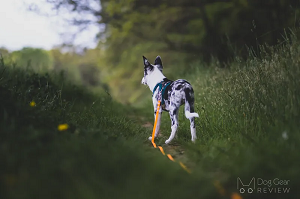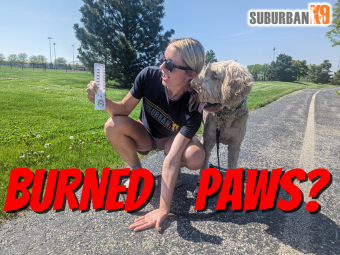A perfect recall command is the dream of every dog owner! Teaching a dog to reliably come when called is one of the most important commands to instill in any canine companion. It not only enhances their safety but also strengthens the bond between the dog and their owner. Follow our tips and tricks, and your dog will come every time you call them! Teaching your dog to come when called is a lot of work, but if you train enough, you and your dog will live the best life possible!
Why is the Come Command Important?
Consistent recall training allows dogs to enjoy more freedom, engage in off-leash activities, and navigate various environments with confidence. A reliable recall is crucial in potentially dangerous situations, such as when a dog approaches a busy road or encounters unfamiliar dogs or wildlife. By mastering this command, dogs learn to respond promptly to their owner's call, returning to their side even in the face of distractions or temptations. This ability significantly reduces the risks associated with unpredictable circumstances, ensuring the dog's well-being and preventing potential accidents.
Moreover, a solid recall command promotes a sense of trust and mutual respect between the dog and their owner. Dogs thrive on the bond and connection they share with their humans. When they learn that coming when called results in positive experiences, rewards, and praise, they are more inclined to willingly and eagerly respond to their owner's command. This trust-building aspect of recall training strengthens the overall relationship, leading to a more enjoyable and harmonious partnership.
Consistency is key in teaching reliable recall. By providing clear and consistent cues, using positive reinforcement techniques, and gradually increasing the level of difficulty in training exercises, dogs learn to associate the recall command with positive outcomes. It is essential to create a positive and motivating environment, ensuring that the dog receives rewards, such as treats, praise, or playtime, for responding promptly to the recall command. With consistent training and practice, dogs develop the habit of coming when called reliably.
Additionally, recall training also allows dogs to enjoy more freedom and off-leash exploration opportunities. Being able to trust that the dog will return when called provides peace of mind for owners, allowing them to engage in activities like hiking, visiting parks, or participating in agility training without constant physical restraint. Dogs that have mastered recall can experience the joy of unrestricted movement while remaining safe and under the control of their owners.
How do you Train the Come Command?
First step: Leash and Collar
To start this process, we recommend using a leash and collar. We slowly work on conditioning your dog to learn what the word “come” means. Make sure you start off with short distances, leash in hand, and in easy low, stimulation environments.
Over time, you can start to make this more difficult by:
- Longer Distances
- Increasing the distractions
- Dropping the leash
Going through all these little steps helps you know when your dog really understands and advances on their come command.
An Important Tool: The Long Line
Once you feel your dog has a good understanding of the come command, we recommend you introduce a long line. We sell 50 foot and 100 foot long lines to our clients, but some clients make their own! The goal of a long line is just to keep your dog safe from running away while giving them the illusion of freedom. If you say come, and your dog ignores you, you can safely stop them if they run away.
It is important to treat the long line like it is invisible. This means that you don't pick up the long line and reel them into you like a fish. If they try to run away from you, you can simply step on the long line and give them a correction. Eventually, we will work away from the long line, but do not rush this process.
How and When to Correct Your Dog for the Come Command
Speaking of corrections, let's get into more details on what this is supposed to look like. You need to first make sure your dog has a good understanding of any commands before you decide to correct them. This is essential; it is wildly unfair and ineffective to correct a dog when they don't understand what we want from them. We only use corrections once a dog has proven to us that they understand the commands we're giving. Typically this requires seeing a dog perform a command three times in a row. Once is a fluke, two is lucky, but three times in a row, and it's highly doubtful the dog does not understand the command.
Our come command correction is designed to remind a dog to walk toward us. If they completely ignore us or run away from us when we say “come,” we will first say “no” while walking towards the dog. Once we get to them, we will pick up the leash with two hands. Walking backward, we will give two tugs towards us, pairing the tugs with a verbal “come” and then add one more tug up for sit as we stop walking backward. You do not need to take them back to their original position as we do with our stay commands.
Transitioning to off-leash Come Command
When we say off-leash, we typically focus on three main areas. Off-leash in the house, off-leash in a fenced yard, or off-leash in an unfenced area away from home. Obviously, some of those locations are harder than others! In order to work on the come command in unfenced areas or at dog parks, we recommend using E collars for many dogs. E collars are completely safe if used and acclimated correctly. We do not use E collars on untrained dogs, and you need to make sure your dog has a good foundation of obedience before you try one out. The acclimation process does take some time, but once your dog feels comfortable wearing one, it is an amazing tool that can help you give your dog the freedom they deserve!
At Suburban K9 we recommend Dogtra E collars. We feel they're the best bang for buck out of the many decent options available. Typically we recommend the Dogtra Arc. However if you have a small dog, we may recommend the Dogtra 280c, and with large dogs, the Dogtra 1900s.
They come with a vibrate and a correction function. The vibrate is used for most dogs, and it represents the come command. We will get our dogs used to feeling the vibration and understand that it means to come back to their owner!! On the other hand, E collars also have a correction function. A good quality E collar will be highly adjustable with its correction levels. The goal with a correction, whether from E Collar or normal collar, should be as light as we can give that get's the dog's response. We always recommend trying the collar on yourself before putting it on your dog so you can see that it does not hurt!
Whether you use an E collar or not, you need to make sure you are following the most important rule! Be 100% consistent! You need to follow a good proofing plan, practice every day, and make sure you are able to discipline your dog if they decide not to listen to you! By doing that, your dog will have the perfect recall command!
Conclusion
In conclusion, teaching a dog to reliably come when called consistently is a fundamental aspect of their training. It promotes their safety, strengthens the human-canine bond, and allows for greater freedom and exploration. By investing time and effort into recall training, dog owners can instill a reliable and responsive recall command, providing their four-legged companions with a lifetime of benefits and a deeper connection based on trust and understanding.






